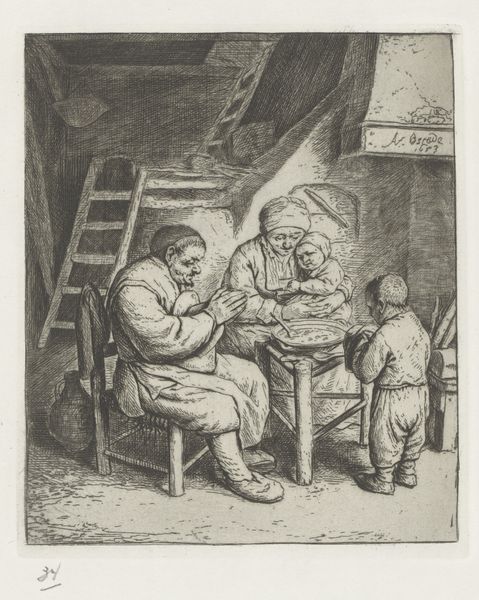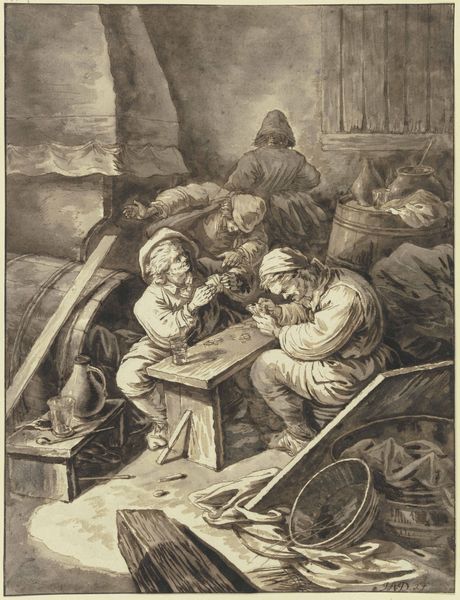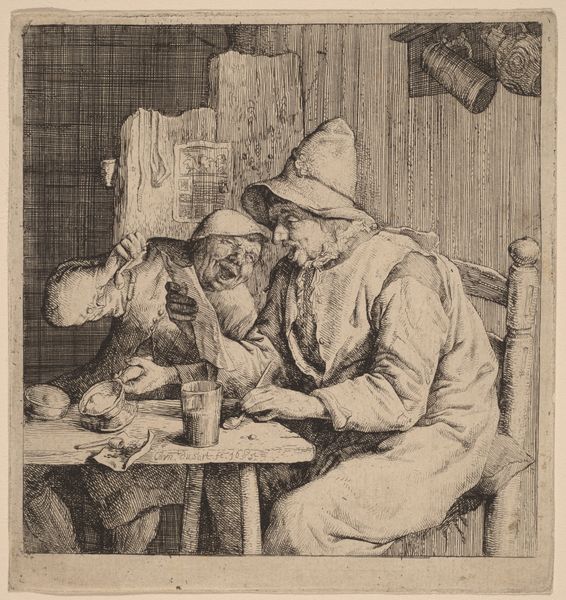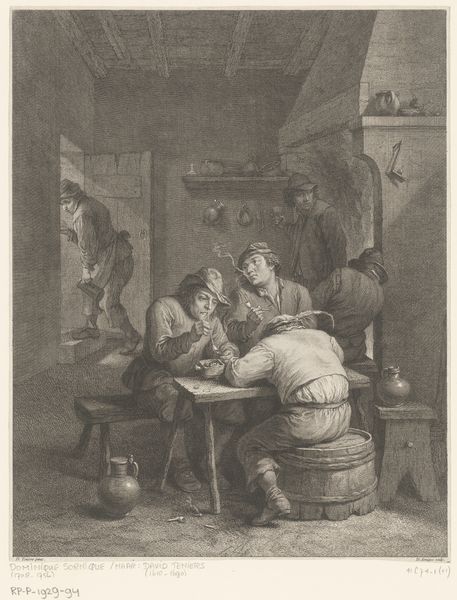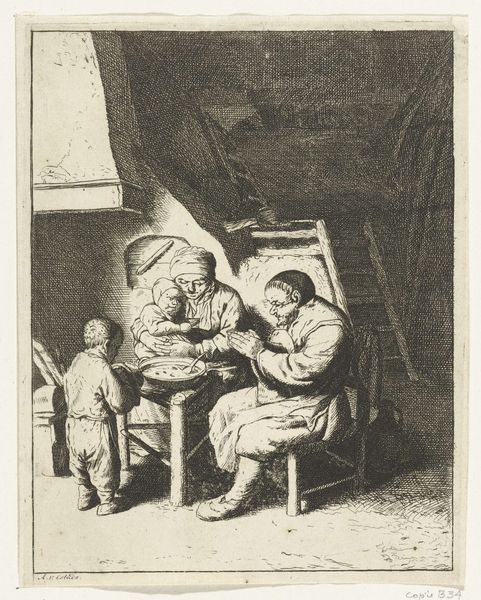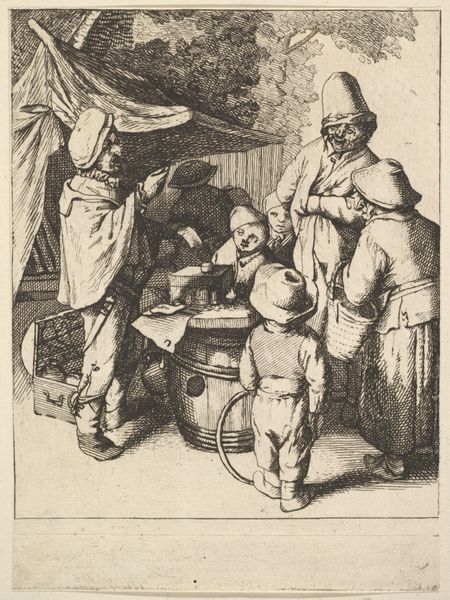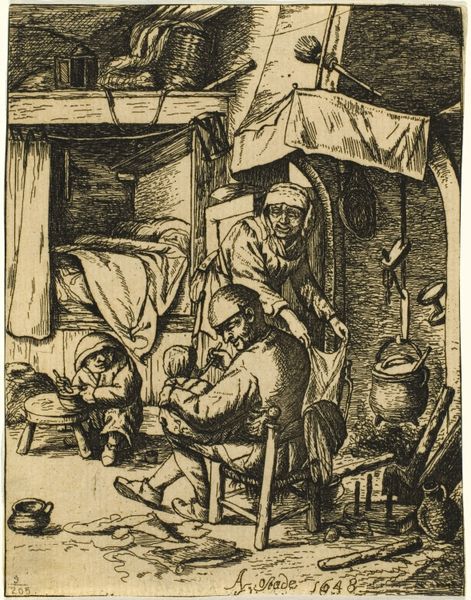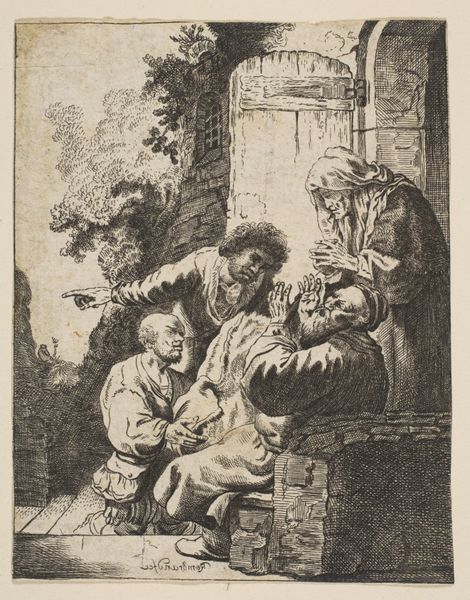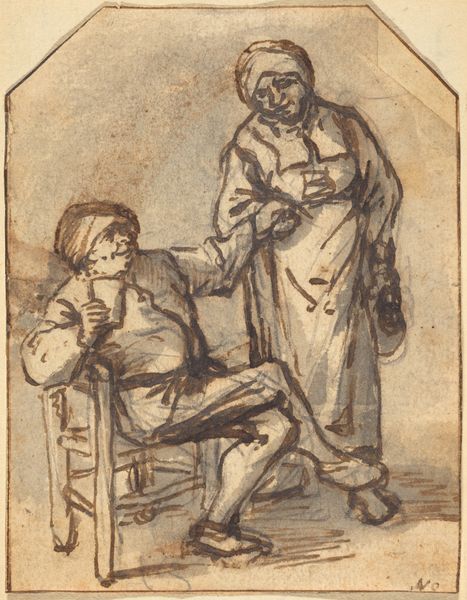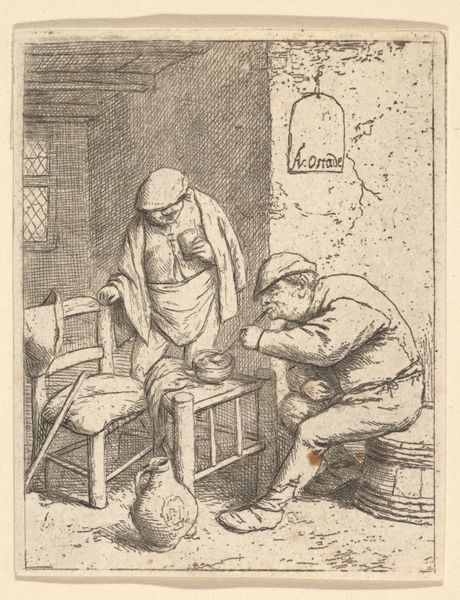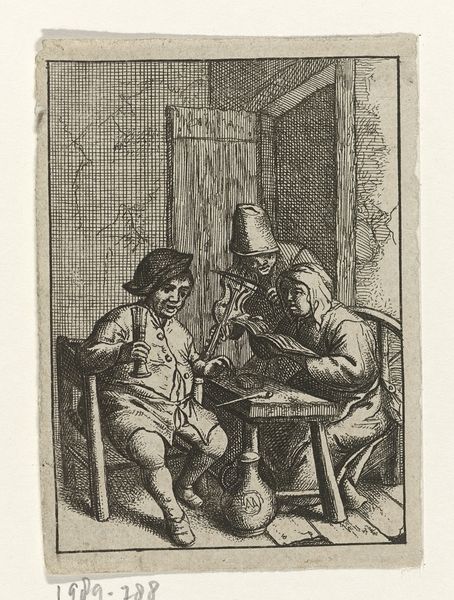
drawing, print, etching
#
drawing
#
dutch-golden-age
# print
#
etching
#
genre-painting
Dimensions: Sheet: 6 in. × 4 15/16 in. (15.3 × 12.5 cm)
Copyright: Public Domain
Editor: This is Adriaen van Ostade's etching, "The Blessing," dating from the mid-17th century. The scene shows a family gathered for a meal, heads bowed. There's a quiet dignity in this domestic interior. How do you interpret the significance of such an everyday scene during that era? Curator: It’s tempting to simply view this as a charming genre scene, a glimpse into 17th-century Dutch family life. However, considering the broader social and political landscape, it offers a powerful counter-narrative. The Dutch Golden Age, for all its prosperity, also witnessed significant social stratification. Images like "The Blessing," portraying working-class families with reverence, implicitly challenge the dominant narratives of wealth and power. What does the family's posture suggest to you? Editor: The bowing of heads, the folded hands… humility, certainly. And maybe also a subtle form of resistance? An assertion of their own spiritual worth, separate from the material wealth flaunted elsewhere? Curator: Exactly. Think about the Reformation and the rise of Protestantism. These movements emphasized individual faith and direct engagement with the divine, challenging the established Church's authority. This etching resonates with those ideals. Ostade seems to be saying that grace and piety aren't confined to grand cathedrals or wealthy patrons; they exist within this humble home, accessible to all. How might this image have functioned as a form of social commentary, particularly in the context of rising economic inequality? Editor: I see it now! By ennobling the everyday lives of ordinary people, Ostade's work implicitly critiques a social order that often ignored or denigrated them. The family's simple meal becomes a powerful statement of faith and human dignity. Curator: Precisely. It’s a reminder that art, even in seemingly simple forms, can engage with profound social and political issues, offering alternative perspectives and challenging prevailing power structures. Editor: That definitely gave me a new perspective, thinking about art as an intersection of class, religion, and subtle acts of resistance. Thank you.
Comments
No comments
Be the first to comment and join the conversation on the ultimate creative platform.
